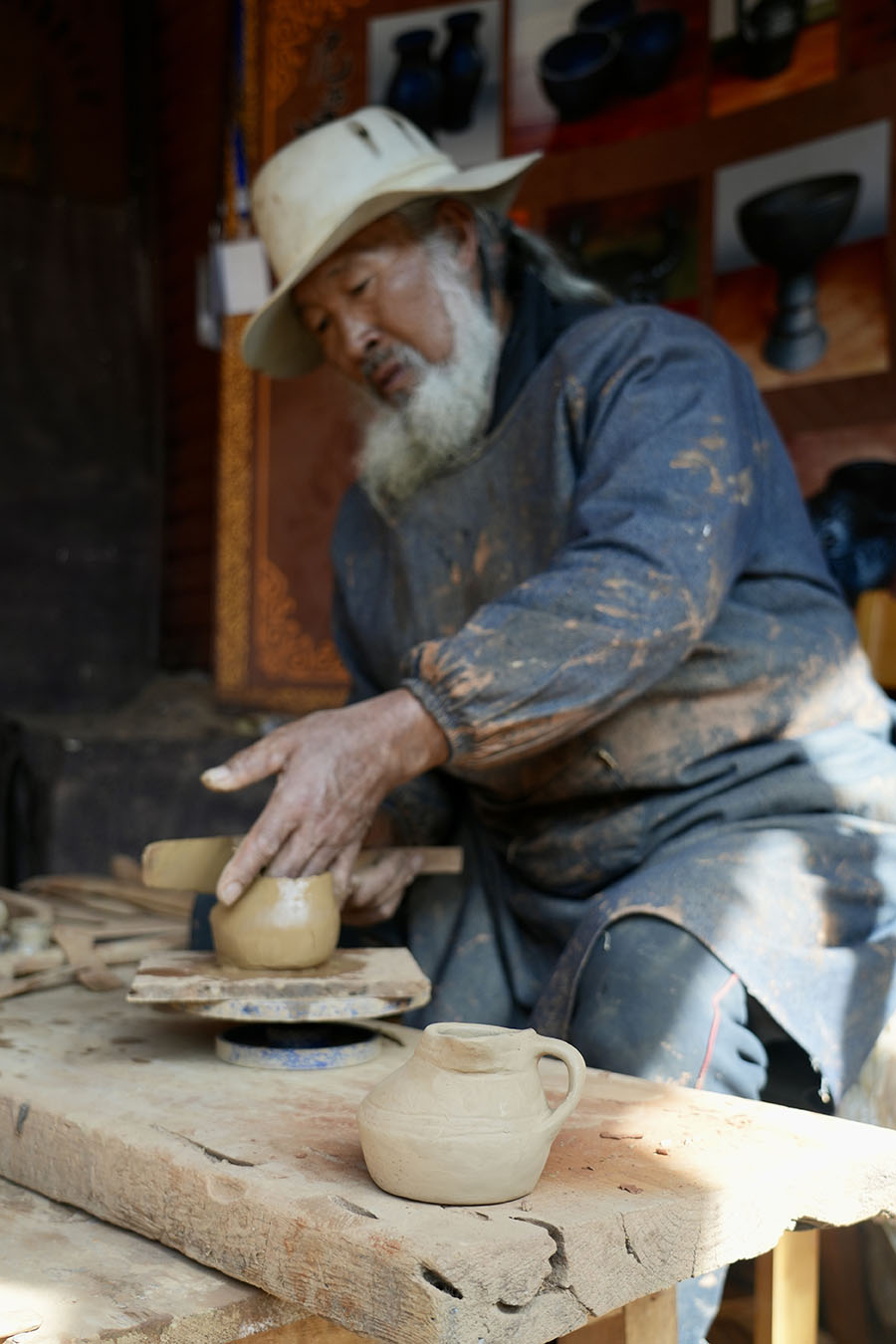A centuries-old craft, now thriving, as artisans mould traditions into exquisite black masterpieces, paving the way for prosperity and cultural preservation.
(ANN/THE CHINA DAILY) – The age-old tradition of Tibetan black pottery is becoming a catalyst for prosperity among the villagers of Tangdui, which is nestled in the enchanting city of Shangri-La in Southwest China’s Yunnan province.
This revered craft, distinguished by its rich black hue reminiscent of paint and the luminosity of jade, has earned the prestigious status of a State-level intangible cultural heritage.
With a heritage spanning over 2,000 years, its roots are deeply embedded in Tibetan regions like Tangdui, specifically in Tangman village, Nixi township of Shangri-La’s Dechen Tibetan autonomous prefecture. Its influence also extends to provinces such as Sichuan and Qinghai.

At the heart of this cultural legacy is 66-year-old Kelsang Wangdu, a custodian of generational tradition in Tangdui.
Wangdu embarked on his journey into this artistic tradition at the tender age of 12, mastering the intricate techniques that have been passed down through generations.
However, the ebb and flow of life compelled him to divert from his artistic pursuits in lieu of a livelihood elsewhere.
It wasn’t until his 50s that he felt the call of his heritage compelling him to return home and resurrect the cherished art form ingrained in his lineage.
In this revival, Wangdu not only seeks to preserve a valuable cultural heritage but also aims to provide a means of sustainable livelihood for his community.

“Every day, I dedicate myself to refining my skills, crafting new black pottery, and teaching a group of apprentices step by step,” he said.
Currently, he mentors 11 apprentices, including his son, passing down the age-old techniques.
The artistry of black pottery making in Tangdui involves a meticulous process: blending white and red clay, weathered sand, and gravel, and then shaping and firing the milled raw materials through 12 intricate steps.
These crafts are widely used in Tibetan lives, serving as essential tableware, cooking utensils, tea sets and more.
In 2008, the “Tibetan Black Pottery Firing Technique” was included in the national intangible cultural heritage protection list.

In recent years, local government support has fuelled product innovation and increased local participation, shifting black pottery production from basic essentials to over 80 diverse items, such as vases and wine glasses, significantly boosting villagers’ income.
“Currently there are 154 households in the village; 108 of them are making black pottery products,” said Tashi Nyima, director of Tangman village.
He noted that black ceramics have become a vital source of income for villagers, replacing previous livelihoods linked to collecting matsutake mushrooms and planting crops.
Statistics show the annual sales of black pottery in Tangdui reached CNY4.6 million (USD640,000) from 2020 to 2022.

To intertwine heritage with tourism, Tangdui has introduced an array of cultural activities throughout the year, luring more tourists.
In 2023 alone, nearly 8,000 visitors flock to Tangdui, seeking an immersive encounter with the artistry of black pottery.
Losang Phuntsok, an entrepreneurial leader chosen by the villagers, expressed his hope to promote Tangdui’s pottery culture through the diversified experiences introduced by the local government – ranging from viewing peach blossoms in spring and sunflowers in summer to year-round black pottery crafting. He said he hopes to spread the craft’s appeal worldwide while engaging more villagers in safeguarding this cherished tradition.
“I hope to develop innovative products with strong market demand, allowing our villagers to earn more. This, in turn, will encourage our younger generation to stay in the village to better preserve this cultural heritage,” said Losang Phuntsok.







